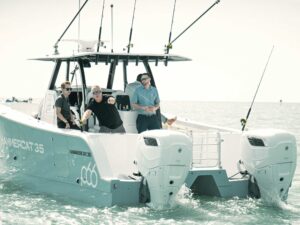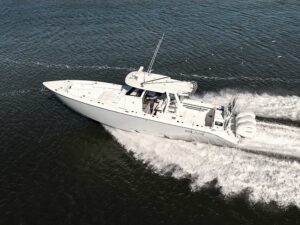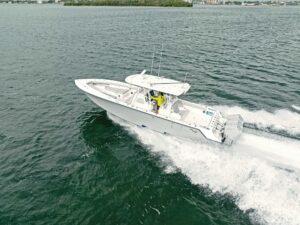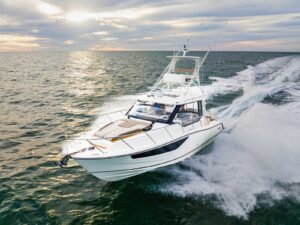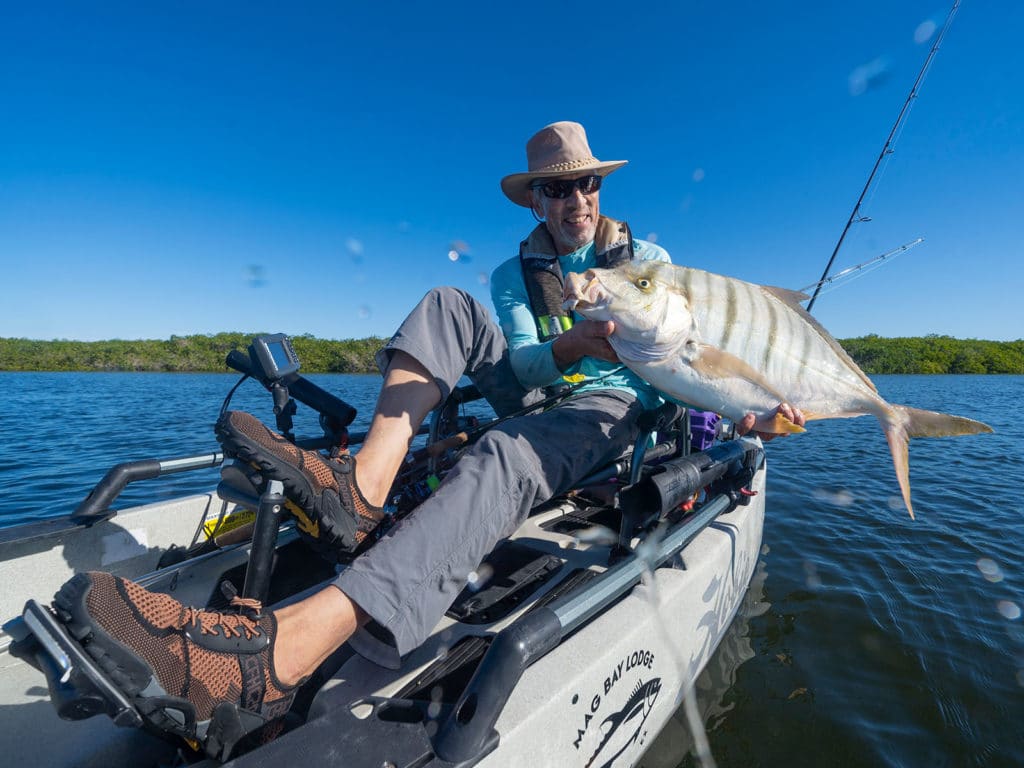
Okay, a kayak won’t always outfish a boat. If your thing is fishing blue water or rough inlets or running balls-to-the-wall across big bays to get to the other side, you’re a boat angler. But in many situations kayak anglers will actually out-fish those who go farther, run faster and spend more. Here are just five scenarios when a kayak will outfish a boat.
Kayaks Put Impossible-to-Reach Fishing Spots Within Reach
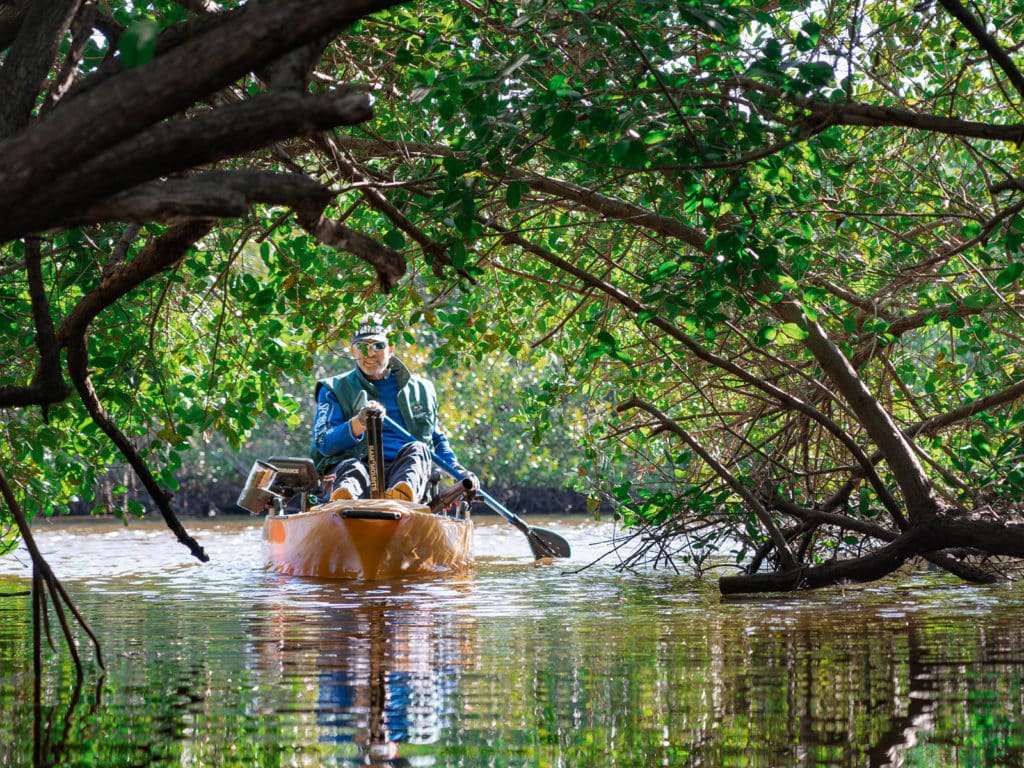
In many regions, plenty of “hidden” lightly- or seldom-fished coastal hotspots hold the potential for tremendous action. Typically these are spots infeasible for boats to reach thanks to one or more stretches of water that run inches deep — or less. Most kayaks can float in water shallow enough to ground a skiff, and if the water (and perhaps the tide) runs out and the angler has to traverse a stretch of dry ground, no problem for a kayaker. Hop out and drag your vessel. (Caveat: not a good option in soft mud.) Also, if you’re willing to put up with some mosquitoes and scratches, you can work a kayak through some pretty tight mangroves.
Kayaks Offer Unmatched Stealth
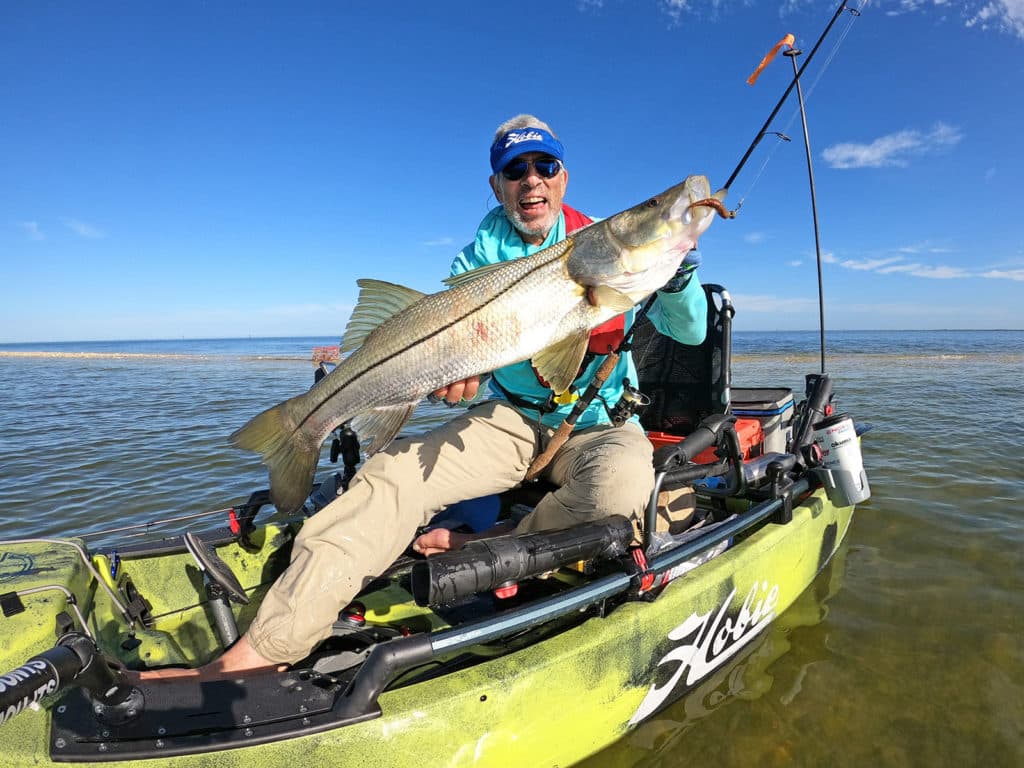
It’s hard to imagine any boat making it more feasible to sneak up on spooky fish than a kayak. When even a trolling motor might put wary fish on notice, a kayak can move through the water without a sound. Pedal kayaks don’t need to break the surface. Better-designed hulls minimize any wave slap. A seated angler’s low profile can in some circumstances be far less likely to spook fish than a fisherman standing on a bow or platform, or even behind a console. (In fairness, this can also be a limitation, since the lower angle can make it harder to see fish.)
Many of today’s super-stable fishing kayaks make it easy to stand, but, well, of course if you can see the fish, the fish can see you. Kayaks are so stealthy that — I’ve discovered the hard way — you can pedal right over a huge manatee in a few feet of murky water. If your kayak’s pedals or its prop touches the animal’s back, hang on for an explosion that can throw you right out of the saddle.
Who Needs a Launch Ramp When You Have a Kayak?
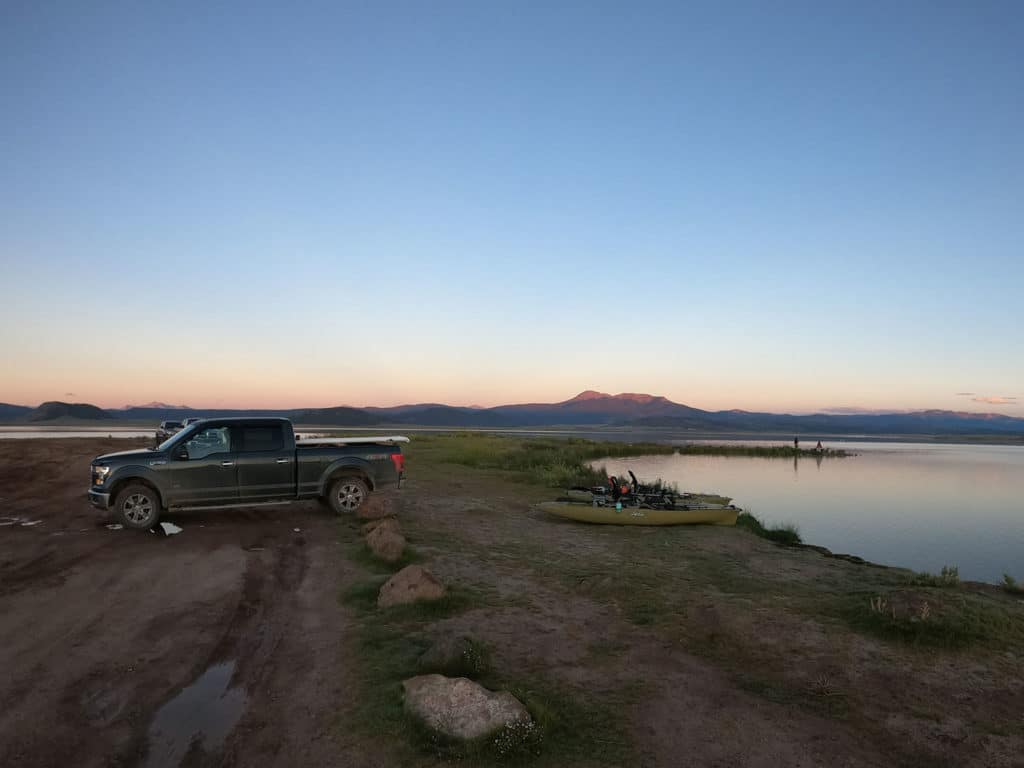
Anywhere you can get to or even near a body of water, you can put a kayak in. Wheels come in handy and may be essential if, for example, you need to pull your fishing machine down a road or path some distance. Often, launching in remote spots means getting a bit damp or muddy, but most anglers figure for access to places that might require a 20-mile run for boaters, it’s well worthwhile.
Often parking is the biggest issue. As long as you can park legally and safely, you’re golden. Lots of kayak anglers do use hard-surface launch ramps since for many waters they’re the best shot at access. But, again, if you can park near a body of water, you can fish it, while avoiding the circus of a busy launch ramp. Often, I’ll use Google Maps (or Earth) to find likely launch sites (frequently including kayak/canoe-only undeveloped sites).
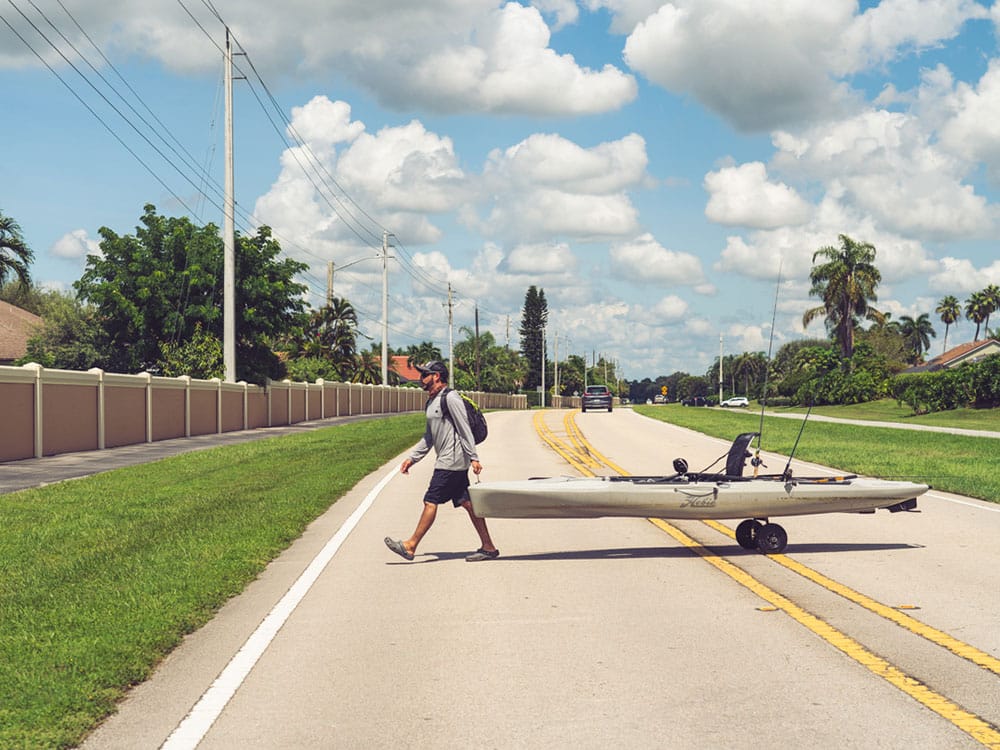
Recently, a friend and I parked in spaces at the back of a shopping center and basically, right from our trucks, slid our kayaks right into a canal that offered access to large, private lakes – lakes we would have been unable to fish had we been boaters. If you need to cross a dike or use a path to go between bays or lakes, no problem if you pack along your easily transportable wheels. I’ve even wheeled my kayak across a busy road to get from one fishing spot into another. Try that with your bay boat!
A Kayak Can Help You Land a Big Fish
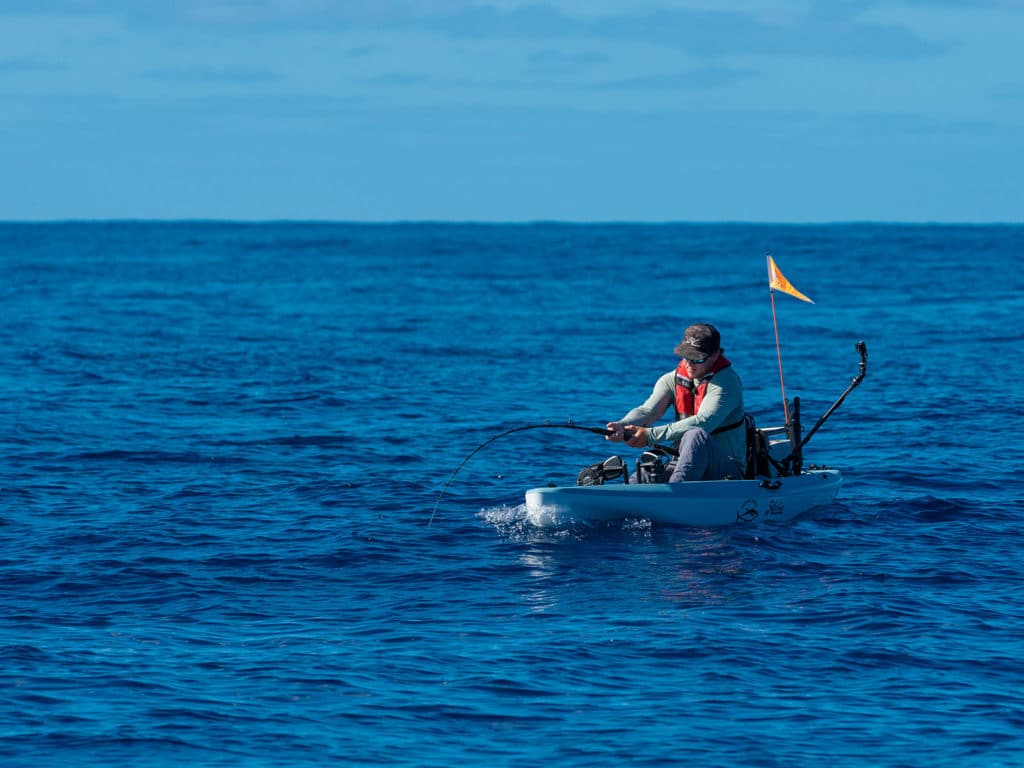
You can chase a fish with a pedal kayak as you might with a boat, though not as fast. But I’ve found that an interesting advantage in wearing down a big fish is that the kayak becomes part of your tackle. That is, big fish will pull the kayak, which in itself is a kick in the ass, but as the hull moves through the water, that also adds resistance in addition to that of your reel’s drag. I have little doubt that this helped me and fellow kayakeros wear down the numerous striped marlin we were hooking off Magdalena Bay, Mexico.
And on the same trip, I utilized another facet of at least some kayaks. Those that are prop-driven need only be pedaled backwards to immediately move away from structure, even as a fish tries to head to it. Hobie also offers nearly instant reverse with its 360-drive pedals. On the same Mag Bay trip mentioned above, fishing a fairly deep channel bordered by thick mangroves, I hooked something larger than I had expected, which immediately began to power its way to the edge of the mangroves. Just as quickly, I pedaled in reverse away from the trees and managed (just) to keep the fish away from structure until I could finally control it in deeper water. Eventually, I released a 15-pound golden trevally.
Kayakers Notice Fish Activity That Boaters Miss
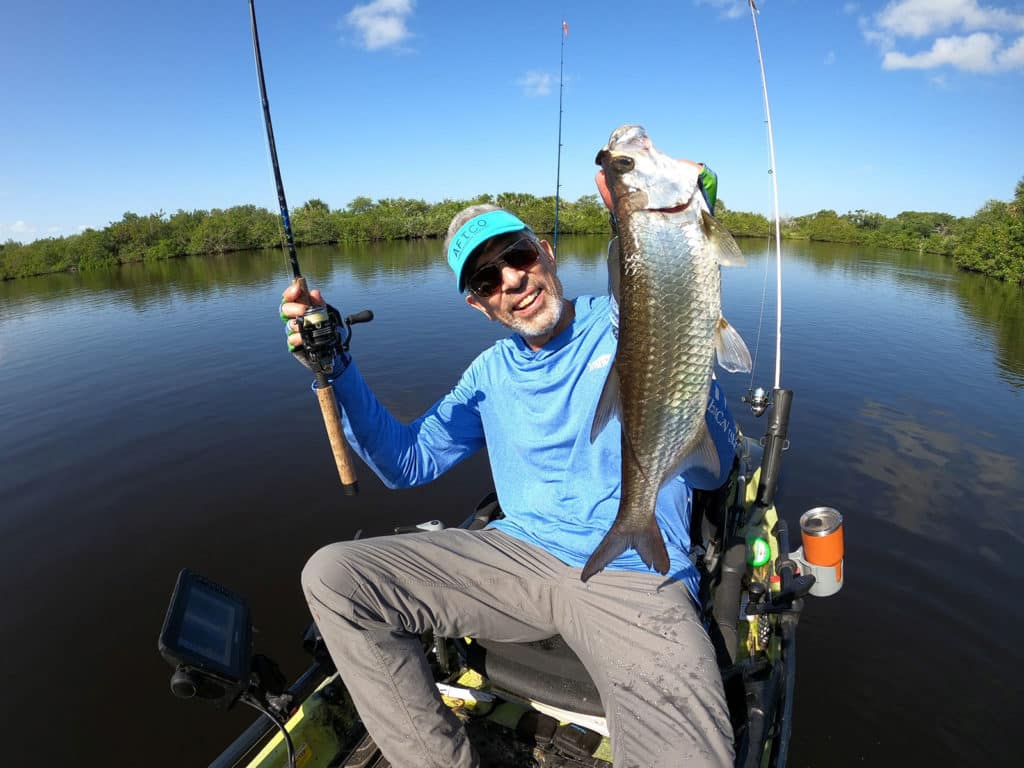
One of a kayak’s disadvantages can also be one of its advantages. That is, compared to roaring down the bay at 30 knots, the pedal pace of a kayak’s 3 mph is rather sedate, limiting the area (while still pretty good) you can fish in a day. But pedaling/paddling along slowly and quietly reveals things those roaring by in boats mostly miss, things fishing (tips of tails showing, white bait flipping, etc.) and things natural (otters, gators, ospreys) that you can really observe rather than glimpse on the fly. I’ve certainly noticed telltale signs of fish/activity while en route to some spot in my kayak that I wouldn’t have seen when heading out in a boat, and hooked up as a result.

